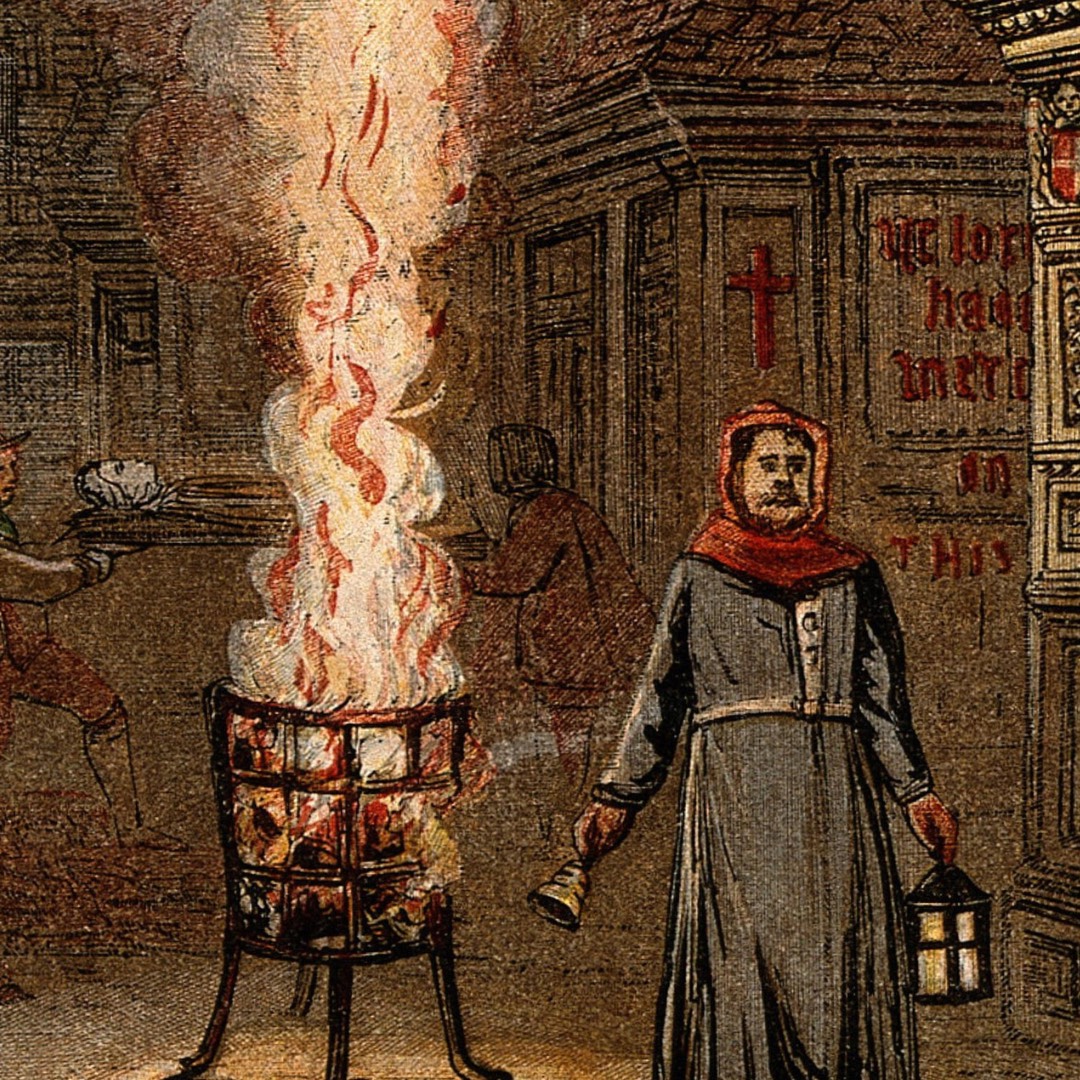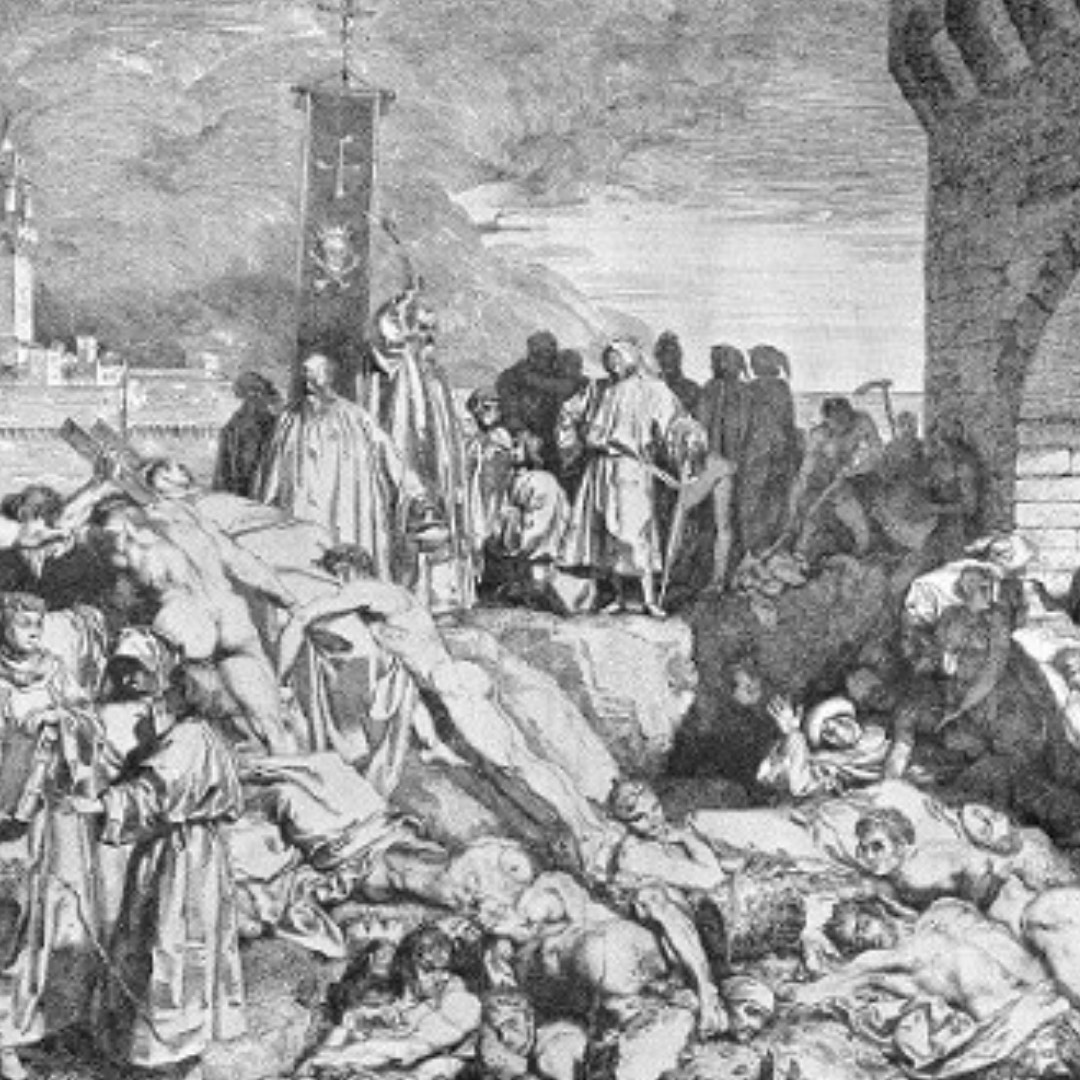In the summer of 1665 Londoners were dying from a horrible and familiar disease. Although it was a regular visitor to the city, bubonic plague had returned with a vengeance. By the end of the year, the ‘Great Plague’ had taken the lives of almost 69,000 people, although the true figure was probably nearer 100,000 – almost a quarter of London’s population.
In 1665 nobody understood what caused the disease or how it was spread. Bad air was blamed, as were the dogs and cats that roamed the city. In fact it was rats, hosts to the disease-carrying fleas, which infested the cramped and dirty streets of London that facilitated the transmission of the plague between its residents.
Primarily bubonic plague is a rat disease and in general terms does not normally affect human beings until the rat population is reduced to a point where there are insufficient rats to sustain it. Whilst the disease is found in several rodent species, it is most commonly found in what we usually term the black rat, though this is not an accurate description and it should properly be called the house rat or ship rat, which indicates its preferred habitat.
The rat is host to a flea, which itself is the carrier of the plague bacilli. The fleas feed on the blood of their host, and when an infected flea feeds, it leaves bacilli in the rat’s body, which brings about a rapid death. If the rat is bitten by healthy fleas the bacilli are taken in during the feeding and so the disease then spreads. In the absence of rats an infected flea will take human blood also thus spreading the disease.
The usual course of bubonic plague in humans is a massive infection on the lymph nodes. However the lungs can also become infected, giving rise to pneumonic plague, which is less common but far more dangerous, since once established, it can be spread by direct human contact, without the assistance of the rodent population. Infected patients sneeze and cough sputum, often mixed with infected blood and spread by the droplets in the expulsion.
The roots of medieval disease were often thought to lie in astrology and so scientific explanations of the cause of sickness were often sought in a study of the heavens. The conjunction of Saturn, Mars and Jupiter in the house of Aquarius was felt to mean the onset of an epidemic on a cataclysmic scale - the black death then erupted in 1347.
There was also a deep religious belief that the arrival of the plague was punishment for sin (a view that was held in Eyam also.) Many believed that the only course of action was divine forgiveness through prayer and repentance.
Medical treatment was primitive in the extreme. Most people trusted in the efficacy of herbs and charms. Unsuspecting people were duped by rogues and charlatans who would sell charms and other medicinals at high prices. Some placed their trust in sweet smelling flowers which was thought to freshen the melodious air, or carried pomanders stuffed with herbs and spices. It is this which gives us the nursery rhyme:
Ring-a-ring o' roses,
A pocket full of posies,
A-tishoo! A-tishoo!
We all fall down.
Some people claim the nursery rhyme 'Ring-a-ring-o'-roses' is about the plague:
- The 'roses' are the red blotches on the skin.
- The 'posies' are the sweet-smelling flowers people carried to try to ward off the plague.
- 'Atishoo' refers to the sneezing fits of people with pneumonic plague.
- 'We all fall down' refers to people dying.
Other people preferred to smoke tobacco thinking it too would clear the melodious air. Samuel Pepys noted that in London attempts to clear the air by burning coal in braziers placed at intervals in the principal streets was carried out.
Other practices to cure the disease included the use of poultices to draw the disease out. Physicians would create medicinal drinks using animal and human body wastes and other fluids. They would prescribe garlic and onions in large quantities.
Fear of the plague corpses spreading infection resulted in a necessity for quick disposal. Putrefaction was thought to set in very quickly after death, the corpses yielding their poisonous infection to the atmosphere as soon as they were cold, and so they were dragged hurriedly to their resting places. In his ’Journal of the Plague Year’ Daniel Defoe tells us that the practice of burying the dead in graves six feet deep began at this time in the hope of preventing infection rising from below the ground. Because of this need to dispose of the dead quickly many stories have surfaced of people being buried before life had finally ebbed away. Whilst no record of this exists within Eyam it is known that Marshall Howe (the local grave digger) came close to it on one occasion. One of his neighbours, a man called Unwin, was close to death. Marshal Howe had prepared the grave, and on hearing that Unwin was at last dead, proceeded to dispose of the body. It was likely the process of being dragged by his feet that stirred some spark of life in Unwin’s unconscious form, for indeed Unwin was not dead, and he in fact called out for a drink. Others would not fare so well as Unwin.
To explore The Plague Village of Eyam and the haunting history it has to share please listen on the following link:





















